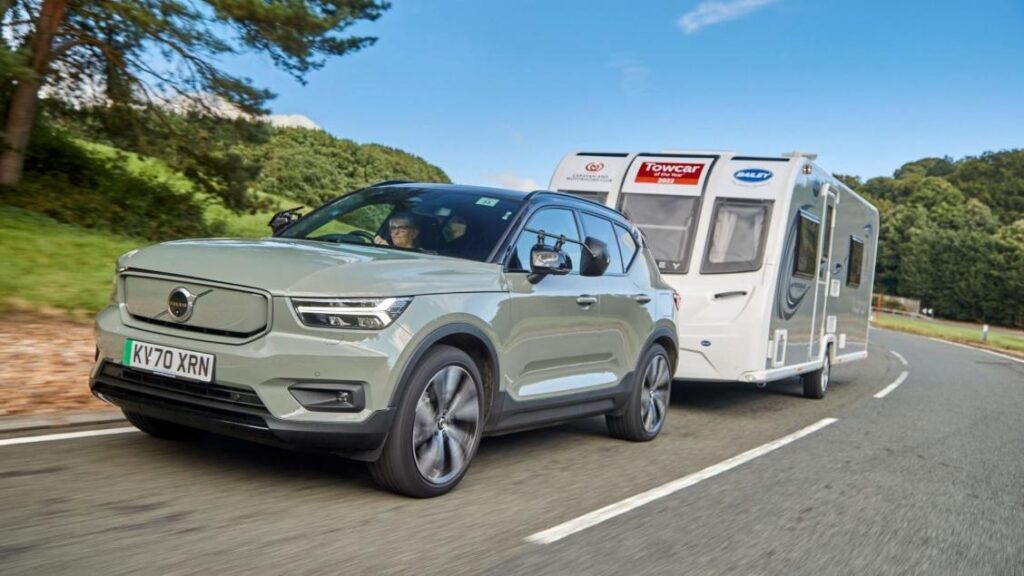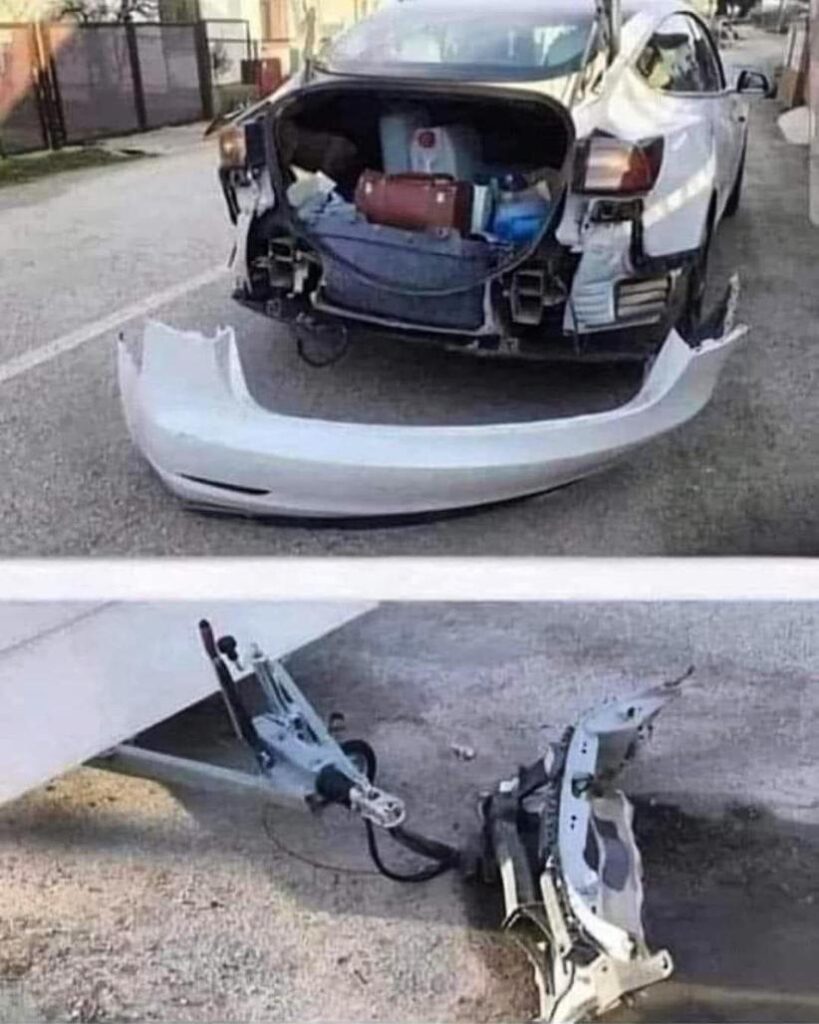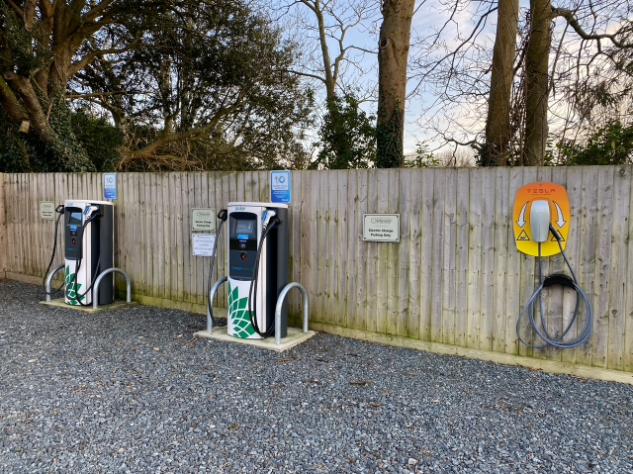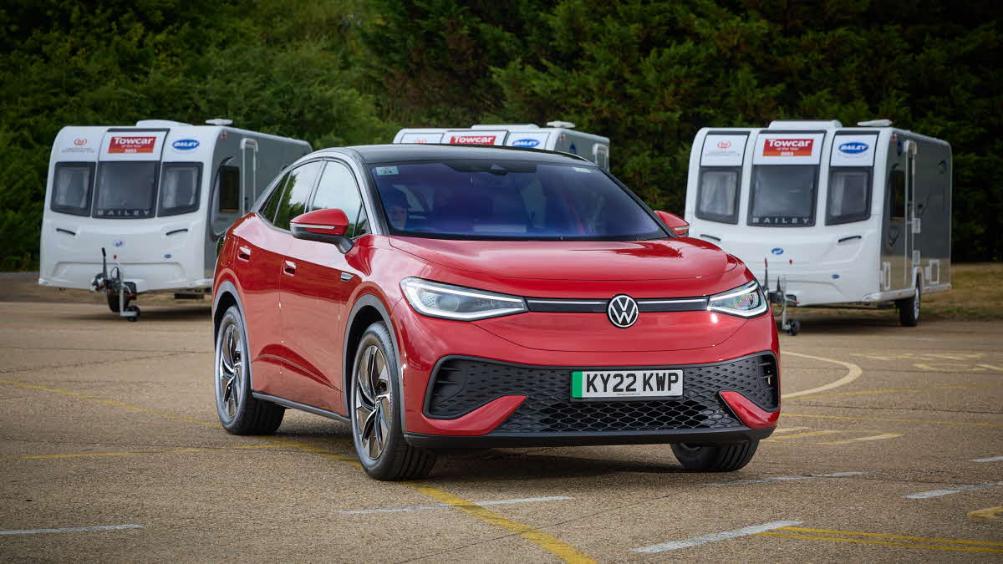If you can’t keep your caravan at home, here are the ways you can safely pitch or store your tourer for extended periods. These include ‘Seasonal Pitching’ and ‘Store & Stay’.
Many people cannot store their caravans at home, due to a lack of space or security, or restrictions in their property deeds.
This means that anyone who wants to experience the amazing caravan or motorhome lifestyle, but is limited by these issues, needs to find a solution.
Luckily, there are several ways around these problems. Let’s start with seasonal touring pitches.
What is Seasonal Pitching?
Seasonal pitching is when you leave your tourer on a campsite pitch for an entire season, and just visit it when you want. Seasonal pitching removes all the hassles of packing, towing, and pitching, etc.
Just pick one of your favourite sites and regions, and you’ve got cost-effective accommodation for most of the year.
Depending on how long you pitch for, the costs will typically be £1,500 to £3,000 for a whole season. While this sounds like a lot, it can cost as little as £75 to £100 a week, and, if you visit your van often, it’s fantastic value.
Most sites offer seasonal caravan pitches from Spring through to Autumn, but will require you to leave the site for a period of time, to avoid being seen as a ‘permanent resident’, which might have tax and usage implications.
If you don’t enjoy towing your caravan, then seasonal pitching could be for you. With your seasonally-sited caravan on its pitch, you don’t have to worry about hauling your caravan around, and can just enjoy the holiday bit! You might also save money on caravan storage fees. And, on a high-quality campsite, your tourer will be perfectly secure.
Also, there’s no pitching and levelling to do, so it might suit caravanners fans who are less mobile. It’s certainly an effective way to extend your caravanning lifestyle, when the body’s not quite as willing and able as it once was.
Simply pick a beautiful seasonal pitch (ideally close(ish) to home – as you’ll use it more often). And you can be comfortably ensconced in your van in time for a barbecue or your favourite soap opera by eight o’clock on a Friday evening!
Cost benefits of seasonal touring pitches
Some of the extra cost for pitching will be ‘repaid’ by your car’s improved fuel efficiency, when you’re not having to tow your tourer. Towing a caravan can halve your car’s fuel efficiency.
Similarly, as you don’t have to tow a caravan, you could also buy a smaller, more-fuel-efficient car family car, so there’d be savings there too.
If you have a favourite site, why take the risk of visiting a new one that you don’t know? An unknown site might be amazing, but there’s also the chance that it won’t live up to expectations.
Your home-from-home with the faff
Another benefit of seasonal pitching is that you won’t have to pack and unpack your van with each trip, as you can leave your van filled with all the kit you’ll need, and even some clothes. Any holiday gear, such as inflatables, wetsuits, and canoes, windbreaks, and furniture can also stay permanently on site.
By frequently visiting the same site, you’ll also make new friends among others who holiday there regularly. Alternatively, encourage good caravanning friends to grab a seasonal pitch too.
If you have kids, and pick a site with child-friendly facilities, they’ll love it there too… and we all know that ‘happy kids mean happy camping’!
Seasonal pitching in the perfect place
Pick your pitch carefully, considering things like size, flatness, the direction of the sun, the campsite wi-fi or phone signal strength, or its proximity to the campsite amenities. A well-chosen seasonal pitch leaves nothing to chance, but you may need to book early.
You can also pick a seasonal destination to fulfil your hobbies and passions, be that fishing, or walking dogs, or watersports.
Seasonal pitching is ideal for those families that enjoy long summer breaks; as, if you stay for a whole month, a long-term pitch makes perfect financial sense. With some families, one parent takes the kids to the caravan for an extended period, while the other working parent joins them for weekends, and for their annual leave.
The ideal gear for seasonal pitching
Pole awnings are recommended for seasonal pitching, as they are strong and rigid, whereas even the best air awning is likely to lose some air pressure over an extended period. A high-quality Isabella awning is the perfect option and will stand up to the very worst British summer weather!
Likewise, we’d recommend using a 100W solar panel to keep your leisure battery topped up (and your alarm/tracker active) when you’re not on site. That way you shouldn’t arrive to find you’ve got a flat leisure battery.
Overall, seasonal pitching means you have a holiday home in one of your favourite spots. But it won’t cost you a fortune as you don’t pay the rates, maintenance, bills, and initial purchase price that you would with a bricks and mortar getaway!!
What is Store & Stay?
‘Store & Stay’ is a lower-cost alternative to seasonal pitching, as you only pay camping fees when you’re at the site and your tourer is actually on a pitch. For the remainder of the time, your van is kept in a neighbouring secure storage facility, where you only pay for storage fees, which are typically much lower (from £5 to £10 per week).
This S&S service is offered by many campsites with storage facilities attached.
When you want to visit your caravan, simply contact the site, book your favourite pitch, and by the time you arrive, your tourer will be in place on your favourite pitch.
Advanced booking is always recommended. And you may have to pay a nominal fee for your tourer to be pitched and levelled for you each time.
When you depart, your caravan is moved back to the secure storage facility, remaining there until your next visit.
Two of my favourite UK campsites offer this facility. Waterrow Park in Somerset and Keal Lodge in south Lincolnshire, both offer adjacent storage, and, in the case of Keal Lodge (an award-winning campsite), its facility was the first in the UK to achieve a Platinum CaSSOA rating. The highest security level that the organisation offers. The best of both worlds!
Secure storage and CaSSOA secure facilities
The other option to Seasonal Pitching and Store & Stay is to permanently store your tourer until you need it.
There are hundreds of secure caravan storage facilities all over the UK. But the best are associated to, and regulated by CaSSOA, the Caravan Storage Site Owners Association.
Typically with caravan storage, you pay an annual fee of between £200 and £600 – depending on location and facilities. You then get easy access to your tourer, so you simply collect it, load it, and tow it off on your travels. Easy!
The best sites have high levels of security, including: palisade fencing, CCTV, floodlighting, ‘air-lock’ double-gate systems, tagged caravans, and automated leisure-vehicle logging, so that every stored vehicle is tracked on and off-site.
With the best CaSSOA sites, caravan owners have 24-hour access to the facility using electronic passes, so early starts are not a problem. Quality sites also offer extra services like cleaning, maintenance, and annual servicing.
By storing at a good CaSSOA site, you will receive cheaper insurance cover from many of the better insurance companies. This reflects the high levels of security at these facilities.
Other options for storage include informal facilities, such as on farms or private land. But these generally do not offer anything like the same level of security as CaSSOA sites. A well-run informal facility can work well, but there is often an increased element of risk.
Permanent caravan parking options
As you’ve seen, there are several options for long-term caravan pitching and storage. None of them are free, but they each offer their own benefits, and they do represent excellent value if picked and used properly.
One thing is for sure, if you can’t park your leisure vehicle at home, there are several options available to help you enjoy the caravan or motorhome lifestyle.
10 Great campsites for seasonal pitching
Bryn Gloch, Gwynedd, Wales
Nestled in the scenic Snowdonia National Park, Bryn Gloch Campsite offers a picturesque retreat for campers. Surrounded by mountains and rivers, it provides a tranquil escape, with modern facilities, spacious pitches, and proximity to hiking trails, making it an ideal base for outdoor enthusiasts.
Longor Holiday Hideaway Park, Peak District, Longor Wood
Longnor Wood, in the charming village of Longnor, Buxton, Derbyshire, offers a peaceful retreat with 23 hardstanding pitches for long-term stays. Surrounded by scenic landscapes, it provides excellent flat pitches and modern amenities. This makes it an ideal base to seasonally-pitch to explore the Peak District National Park and its picturesque surroundings.
The Laurels Holiday Park, Cornwall
Nestled in the heart of Cornwall, in Whitecross, Wadebridge, offers a serene escape. Surrounded by lush countryside, it features spacious gravel and grass pitches and excellent facilities. This makes it a perfect base to pitch up long-term and explore Cornwall’s stunning beaches, quaint villages, and scenic landscapes.
Cotswold Hills Country Park, Oxfordshire
Cotswold Hills Country Park in Chipping Norton, Oxfordshire, offers a tranquil escape in the picturesque Cotswolds. It is ideal for those Midlands-based caravanners seeking seasonal pitches within an hour’s drive of home. Surrounded by rolling hills, it provides lovely pitches and facilities, which make it very inviting for visitors wanting to relax in a peaceful setting while exploring the charming villages and countryside of Oxfordshire.
Lebberston Caravan Park, North Yorkshire
Lebberston Caravan Park in Scarborough, North Yorkshire, offers a coastal retreat near the vibrant seaside town of Scarborough and within a short drive of York, Malton, Pickering, and Filey. The campsite has modern facilities and spacious, flat pitches. This makes it a good place to stay if you want to explore the Yorkshire coast. You can enjoy the sandy beaches and discover the area’s rich history and attractions.
Lanyon Holiday Park
Lanyon Holiday Park in Four Lanes, Redruth, Cornwall, offers a peaceful haven for long-term pitching in the heart of Cornwall’s mining-heritage region. With well-equipped facilities, the site is set among rolling countryside and provides a convenient base for exploring Cornwall’s historic sites, coastal beauty, and charming villages.
Bunchrew Caravan Park
Bunchrew Caravan Park, located near Inverness on the shores of the Beauly Firth, offers a tranquil escape in the Scottish Highlands. With modern facilities and stunning views from most pitches, it provides a perfect base for exploring the Highland landscapes, historic sites, and nearby Inverness.
Kings Lynn Caravan And Camping Park
King’s Lynn Caravan and Camping Park, situated in the historic town of King’s Lynn, Norfolk, provides a welcoming retreat. With modern amenities and convenient access to the town’s attractions, it offers a comfortable base for exploring Norfolk’s scenic countryside and cultural landmarks. Long-term pitchers will love the easy access to Norfolk’s sensational northern coastline, too.
Ream Hills Holiday Park
Ream Hills Holiday Park in Weeton, Blackpool, Lancashire, offers a peaceful escape near the lively city of Blackpool. With level pitches and well-appointed camping facilities, it provides a convenient long-term base to explore Blackpool’s attractions, enjoy coastal delights or relax in a scenic countryside setting.
Sandyholme Holiday Park
Sandyholme Holiday Park in Owermoigne, Dorchester, Dorset, offers a tranquil getaway for seasonal caravanners in the heart of rural Dorset. With modern facilities and beautiful pitches, it provides a serene base to explore Dorset’s many historic landmarks, scenic landscapes, and nearby attractions.
Find Your Perfect Staycation with Raymond James Caravans
Raymond James Caravans is dedicated to making sure that every caravanner finds the best way to spend their staycation. Whether you’re looking for a seasonal pitch to enjoy the beautiful countryside over an extended period, or you need secure storage options that offer peace of mind when you’re not on the road, we’re here to help.
Our team is committed to providing expert advice and support to help you make the most of your caravan experience. Visit us today and see how easy and fun it can be to find the perfect caravan with the right help and options. At Raymond James Caravans, your perfect getaway starts here.



















